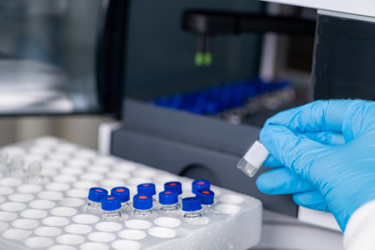Understanding Viral Clearance During Anion-Exchange Chromatography
By Moira Lynch, Zhijun (George) Tan, Angela Lewandowski, Jessica Hung, Sanchayita Ghose, and Naresh Chennamsetty

Republished wth permission. BioProcess International vol 20 (12) 2022
Anion-exchange chromatography is a commonly used method in the purification of biotherapeutics to remove viruses and impurities. However, it is difficult to predict the effectiveness of this process in removing viruses. To gain a better understanding of the mechanism of virus removal, a study was conducted using a polishing step based on POROS HQ resin. The study focused on the removal of minute virus of mice (MVM) and three monoclonal antibodies (MAbs) with different properties.
The results of the study showed that the properties of the MAbs, load pH, and conductivity had the greatest impact on viral clearance and the presence of positively charged patches on the MAb surfaces and the negatively charged virus particles contributed to high log reduction values (LRVs) for MAb A. Additionally, the presence of hydrophobic patches on the MAb surfaces also played a role in interactions with the resin and virus particles. This suggests that the biophysical properties of MAbs, such as surface charge and hydrophobicity, can influence the separation and clearance of viruses during anion-exchange chromatography. The traditional understanding of resin-virus and MAb-resin interactions may not fully explain these results, highlighting the need to consider specific molecular properties in the development of the purification process.
The article discusses the phenomenon of virus coelution in antibody exchange (AEX) chromatography and its impact on viral clearance. It was observed that the interaction between monoclonal antibodies and viruses can influence the coelution of virus particles and proteins through an AEX column. The behavior of three tested MAbs on the AEX resin was observed, with MAb A showing improved viral clearance when the pH was increased, MAb B showing moderate viral clearance with little sensitivity to pH, and MAb C achieving high viral clearance across a range of pH values. These findings suggest that weak interactions between MAbs and viruses can explain the coelution mechanism and its impact on viral clearance. The study also highlights the limitations of conventional factors in predicting viral clearance behavior and proposes a novel design of experiments approach to improve prediction accuracy.
Get unlimited access to:
Enter your credentials below to log in. Not yet a member of Bioprocess Online? Subscribe today.
